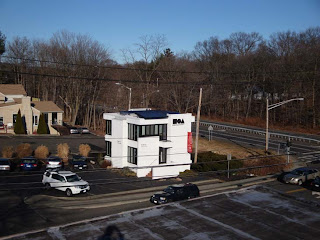
If you see me walking around with a device that looks like it came from a sci-fi film, have no fear, it is merely a foot-candle meter. As part of our green building renovations all of our light fixtures are being replaced. We have purchased very high performing lights that will cut our energy use in some spaces over 75%.
The average office building uses approximately 1.0 - 1.2 watts per square foot to illuminate the interior spaces. For every three watts used to light our buildings we need an additional watt to remove the excess heat generated by all those artificial lights. In many buildings lighting accounts for around 30% of its total energy use. Our lighting upgrades have reduced our connected light loads from 1.2 watts per square foot to under 0.6 watts per square foot. Additional savings will be achieved through the use of occupancy sensors that shut off the lights when the space is vacant. We are also experimenting with daylight harvesting. Sensors will measure the amount of daylight in a space and automatically dim the artificial lights while maintaining predefined light levels. We are still calibrating the sensors; however the initial results are exciting. One space that previously used eight 32 watt fluorescent lamps now needs only TWO 28 watt T-5 lamps strategically place to give more light on the desks (over 50 foot-candles) reducing the energy use to light that space almost 80%.
Stay tuned for our next sustainable strategy - rainwater harvesting. Over 60% of the potable water we use in our office building is literally flushed down the toilet. That’s about to change.
Stay tuned for our next sustainable strategy - rainwater harvesting. Over 60% of the potable water we use in our office building is literally flushed down the toilet. That’s about to change.
By Michael Shilale, AIA, LEED









